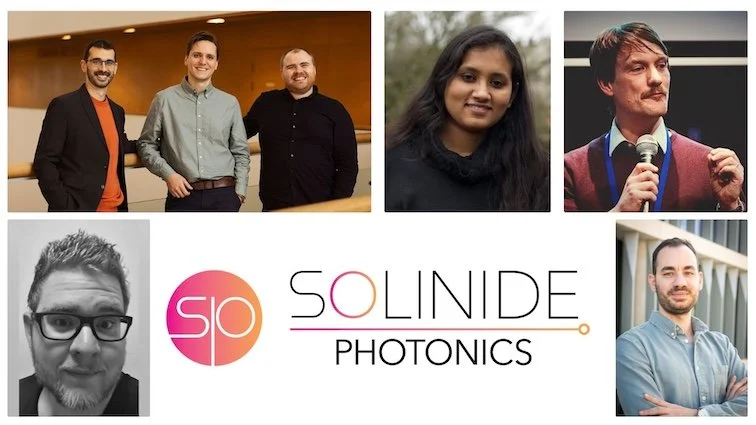Solinide Photonics: From Lab Breakthrough to Space Communications
An interview with: Håkan Zadik of Solinide Photonics — an ESA BIC Sweden incubatee.
How and when did your startup journey begin, working with space-related tech?
Solinide started at Chalmers University of Technology, where we were pushing the limits of integrated photonics and published a breakthrough in Nature Photonics on making soliton microcombs highly power-efficient.
What began as pure science quickly revealed huge commercial potential: our technology could enable ultra-efficient, compact, and scalable photonic communication systems. That insight led us to spin out Solinide Photonics AB.
The space angle came naturally. The same qualities that make our tech perfect for data centers: low power consumption, high stability, and precision, are exactly what space systems demand. From day one, we saw the opportunity to transform both Earth and space communications.
What does Solinide Photonics AB do?
We develop next-generation photonic solutions based on soliton microcomb technology. In simple terms, one of our power-efficient microcombs can replace dozens of individual lasers. This means we can dramatically increase data transmission capacity while reducing power consumption by orders of magnitude, a critical advantage for both hyperscale data centres and space missions.
Another key benefit is the minimal physical footprint of our technology. Instead of racks of bulky equipment, we deliver this functionality on a tiny chip. That’s essential for space-based applications, where every gram and cubic centimetre matters.
What have you been up to the past year?
The past year has been all about laying the foundation for scale. We’ve strengthened our internal prototyping capabilities—bringing more of the critical processes in-house so we can iterate faster and maintain control over quality. The pace of development in our field is extreme, and we need to move quickly without compromising on precision.
We’ve also expanded the team with key recruitments to match that pace. Building a strong, multidisciplinary team is essential for us, turning our scientific breakthroughs into robust, commercial-ready technology. On top of that, we’ve continued to grow our IP portfolio and deepen collaborations with industry partners, while exploring how to adapt our technology for space applications with support from ESA BIC Sweden.
What have been your greatest accomplishment this far and what’s been trickier?
Building a world-class team and internal capability that sets the foundation for moving from groundbreaking research to scalable technology. We have made a technological breakthrough, proving that soliton microcombs can be power efficient, stable and scalable. That’s a huge step for information and communication technology and a key enabler for both terrestrial and space applications.
The hardest part? The realities of a startup: limited resources, fast timelines, and a heck of a lot to do. Deep-tech hardware is complex, and every decision, whether in design, fabrication, or partnerships—has long-term implications. Balancing speed with precision, and doing it with limited resources, has been a constant challenge. But it’s also what makes the journey exciting.
What’s in the pipeline now?
We’re gearing up for an investment round to accelerate both development and commercialization of our technology. On the technical side, we’re focused on pushing our technology readiness level higher. Both in-house and together with strategic partners. This means refining our designs, strengthening our prototyping capabilities, and preparing for real-world deployments.
And of course, we’ll be out there meeting the community, attending key industry events and fairs to showcase what we’re building and connect with potential partners and customers.
What advice would you give to other startups thinking about joining the space industry and/or applying to ESA BIC Sweden?
If you get the chance: go for it. For us, the real value has been in a few things: having access to a great incubator and business coach, being part of a supportive community, and, of course, getting connections and the chance to work in one of the most exciting industries out there: space.
It’s an opportunity that gives you both credibility and inspiration. So if you’re curious and your tech has potential in space, this is a great way to start that journey.
What has been the most valuable for you, being a part of ESA BIC Sweden?
For us, two things stand out: credibility and connections. ESA BIC has opened doors for us, and we’ve had the chance to participate in events, present our company, and build relationships with potential partners and investors. That combination of visibility and trust has been incredibly valuable for our growth.
More information about Solinide Photonics

